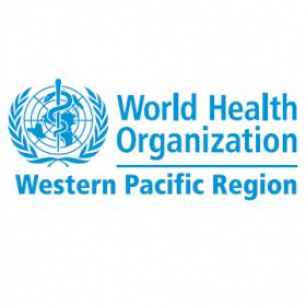EXECUTIVE SUMMARY
Introduction
This desk-based review of adolescent substance use and responses to it was conducted by the National Drug and Alcohol Research Centre. The aim was to provide up to date information to assist the WHO’s Western Pacific Regional Office, CHD (Child and Adolescent Health) and MNH (Mental Health) sections in particular, to develop effective programme responses and support for the health sector.
The data come from both white (Peer-reviewed) and grey (non-peer reviewed: including published and unpublished reports) literature. In addition online internet searches using Google and other drug specific websites were conducted to gather relevant information and data for specific countries.
In addition to online searches, key experts in the Western Pacific region were contacted via email and telephone.
However, the feedback received from the key experts was very limited and gathered much less information than originally anticipated by the research team.
Despite extensive searching for data and documentation for this review in the short period of time available, including contacting key informants, useful information was difficult to locate. This was especially so, for prevention and treatment interventions.
It must be stressed that data availability and quality overall are deficient. Within many countries surveys used over time vary considerably, as do populations sampled. Most data are very much ‘out of date’, do not allow for trends or emerging drugs of concern to be identified. It is extremely difficult to convey a meaningful picture of current, or even recent, prevalence of adolescent substance use across the region, let alone identify details of preventive and treatment interventions.
The Western Pacific Region (WPR) is home to a very youthful population. The region also plays a significant role in the production and manufacture of heroin and Amphetamine Type Stimulants (ATS). Most countries within the region have identified substance use in general, and by young people in particular, as of great concern to the health and wellbeing of their populations and in having a negative impact on economic development. (Burnett Institute, 2010) Alcohol use by adolescents, in particular, is of increasing concern across the region. With the influence of various socio-economic factors, including effects of globalization, unemployment and demographic change - drug use among young people is posing significant problems, both on the individual and communal level.
As substance use is associated with many risky behaviours, broad and comprehensive rather than narrow interventions are required to deal with the range. Specific to substance use, an escalation in injecting has contributed to the rapid spread of HIV, hepatitis and other infections. Now in some communities, when using substances for the first time, young people often choose to inject. Young injectors are also more likely to be involved in riskier behaviours than older injectors. Risky sexual behaviour while intoxicated increases the risk of unplanned pregnancies and sexually transmitted infections (STIs). Road traffic and other accidents, often associated with alcohol use, are a major cause of mortality and injury among children and young people. To survive, many young people are putting themselves at risk of violence by working in the illicit drug and commercial sex industries. Finally, the troubling increases in suicide and homicide among young people, in developed countries in particular, is seen to be associated with substance use.
The burden of disease and morbidity associated with adolescent substance use tends not to be evenly distributed, but falls more especially among vulnerable adolescents and young people now, often referred to as ‘most at risk adolescents’ (MARA) and ‘most at risk young people’ (MARYP). MARA and MARYP tend to be: very young adolescents, same sex-attracted, minority populations/cultures, young sex workers, young workers, young parents, those in juvenile justice/closed settings, and those living in very risky situations and environments.
In many countries in the Western Pacific Region, an increase in illicit drug use, particularly ATS, including Ecstasy (MDMA) and cannabis, and changes in modes of administration, such as injecting, is occurring. Multiple substance use patterns are becoming increasingly common, with young people moving from one substance to another and using drugs in various combinations.
Changing international drug trafficking routes are also of concern, as they bring 'new' drugs into an area for transshipment. Some of these drugs remain, and consequently use of them spreads. This is evident in the Pacific, as is some drug production (e.g. cannabis). There have also been changes in relation to the trade in licit substances, with the targeting of developing countries by the international alcohol and tobacco industries. This can be seen, in part, as a response to declining and changing consumption in more developed countries.
While the specific needs of young people are recognized to some extent, they remain largely unmet in many settings. Overly punitive laws, the demonisation of drugs, the criminalisation of drug users, and an apparent disregard for the human rights of drug users of whatever age in many countries in the region continue to work against change. The latter is exemplified by the over use of compulsory residential ‘treatment’ centres, wherein young people are mostly accommodated within a general population, not-segregated, and their specific developmental needs not given priority; despite countries in the region being signatories to the Convention on the Rights of the Child. In most countries, compulsory treatment is operated by public security, and health plays a minor role - if any. This is despite increased attention to substance dependence being regarded as a ‘health issue’ by UN and other international bodies, and the increasing call for the recognition of the human rights of drug users (UN General Assembly, Human Rights Council, 2009). In addition, little attention is paid to harm reduction, if it exists and is sanctioned, particularly for young people.


